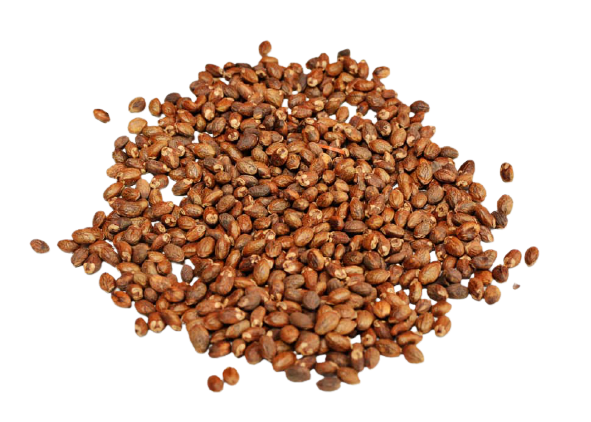Croton penduliflorus

|
|
Croton penduliflorus Common Names: Croton, Turks cap, Rushfoil, Yoruba
croton Scientific
Classification Kingdom: Plantae Clade: Tracheophytes Clade: Angiosperms Clade: Eudicots Clade: Rosids Order: Malpighiales Family: Euphorbiaceae Genus: Croton Species: C. penduliflorus Synonyms: Croton mooriae Greenway ex Burtt Davy & Hoyle, Croton rubinoensis Aubrév. Morphological Description Croton penduliflorus is a shrub or small tree, typically growing 3–10 meters
tall, with a spreading canopy. Its key characteristics include: · Stem: Woody, often branched, with greyish-brown bark; exudes a
milky, irritating latex when cut. · Leaves: Alternate, simple to slightly lobed, ovate to lanceolate
(5–15 cm × 3–7 cm), glossy green, with entire or serrated margins; petioles 1–4
cm long. · Flowers: Small, greenish-yellow, unisexual, arranged in axillary or
terminal racemes (5–10 cm long); male flowers have numerous stamens, female
flowers have a 3-celled ovary. · Fruit: Globose capsules (1–2 cm diameter), green turning brown,
containing 3 seeds; capsules split open when mature, dispersing seeds. Distribution and Habitat Croton penduliflorus is native to tropical Africa, thriving in specific
ecological niches: · Geographic Range: Found in West Africa (Nigeria, Ghana,
Benin, Togo) and Central Africa (Cameroon, DR Congo); occasionally cultivated
in Nigeria for medicinal purposes. · Habitat: Prefers forest margins, savanna woodlands, and disturbed
areas like roadsides; thrives in well-drained, loamy soils (pH 5.5–7.0) with
annual rainfall of 1,000–2,000 mm; found at elevations up to 1,500 m. · Ecological Role: Acts as a pioneer species in disturbed
areas; supports pollinators like bees; its seeds are dispersed by explosive
dehiscence, contributing to its spread. Ethnopharmacology Croton penduliflorus is a medicinal plant widely used in African traditional
medicine for treating a range of health conditions. Its seeds, leaves, and bark
are employed in folk remedies to manage fevers, inflammation, menstrual
disorders, constipation, and parasitic infections. Pharmacological studies have
validated many of these traditional uses: the stem bark extract has shown
significant anti-inflammatory, antioxidant, and antimicrobial activities. The
seed oil contains bioactive fatty acids such as linoleic and oleic acids,
contributing to its therapeutic effects and potential use in skin and wound
care. Research has also identified moderate cytotoxic effects against certain
cancer cell lines, although care is advised due to toxicity concerns at higher
doses. Acute toxicity studies in mice have indicated possible hepatotoxicity
and nephrotoxicity when consumed in large amounts, underlining the need for
cautious use and further pharmacological validation. · Purgative: In Nigeria, seed extracts treat
constipation. Methanolic seed extracts (550 mg/kg) increased intestinal
motility by 40% in pregnant rats, enhancing disaccharidase enzyme activity (Oyesola, 2009). · Anti-inflammatory
and Antioxidant Activities:
The hydro-ethanolic extract of Croton penduliflorus stem bark exhibited
significant anti-inflammatory effects, reducing carrageenan-induced paw edema
in rats by 62.5% at a dose of 300 mg/kg after 4 hours, comparable to
diclofenac. It also showed potent antioxidant properties, with a total phenolic
content of 1238 mg tannic acid equivalent/g and a total antioxidant capacity of
362.33 mg ascorbic acid equivalent/g, demonstrating 78% DPPH radical scavenging
activity at 100 µg/mL (Baah et al., 2017). · Antimicrobial
Properties: The seed oil of C.
penduliflorus demonstrated antimicrobial activity against bacterial strains
such as Staphylococcus aureus and Escherichia coli and fungal strains like
Candida albicans, with minimum inhibitory concentrations (MICs) ranging from
12.5 to 50 µg/mL. The oil’s efficacy was attributed to its high content of
unsaturated fatty acids, including 42% oleic acid and 28% linoleic acid, which
disrupt microbial cell membranes (Ojo et al., 2017). · Cytotoxic
Activity: The seed oil of C.
penduliflorus exhibited moderate cytotoxic effects against Ehrlich Ascites
Carcinoma cells, with an IC₅₀ value of 561 µg/mL after 24 hours of exposure,
compared to 5-fluorouracil’s IC₅₀ of 10 µg/mL. The oil induced apoptosis in 35%
of cancer cells at 500 µg/mL, suggesting potential anticancer properties
(Ojokuku et al., 2018). · Gastrointestinal
Effects: The seed oil of C.
penduliflorus increased intestinal motility in mice by 45% at a dose of 100
mg/kg, as measured by charcoal meal transit time, supporting its traditional
use as a laxative. The gut-stimulating effect was linked to a bioactive
principle that also influenced central nervous system activity, causing mild
sedation at higher doses (Asuzu et al., 1989). ⚠ Toxicity Profile Croton penduliflorus contains irritant diterpenes and milky
latex, which can cause severe skin and mucosal irritation. Acute toxicity
studies in mice determined that C. penduliflorus seed oil has an LD₅₀ of
approximately 570 mg/kg body weight. Doses above 600 mg/kg caused significant
weight loss (up to 15% body weight), elevated liver enzymes (AST by 40% and ALP
by 35%), and electrolyte imbalances (e.g., reduced sodium levels by 20%),
indicating potential hepatotoxic and nephrotoxic effects (Ojokuku et al.,
2015). Chronic administration of the seed oil at 50 mg/kg for 30 days led to
severe lesions in visceral organs, including liver necrosis and renal tubular
degeneration, as well as brain tissue damage, emphasizing the need for cautious
use (Asuzu et al., 1989). Additional Uses · Ornamental: Planted in Nigeria for its attractive foliage and flowers,
though its toxic latex limits widespread use. · Cultural: In Yoruba culture, leaf decoctions are used in rituals for
protection against spiritual ailments. · Environmental: Used in agroforestry to stabilize soil in forest margins;
its rapid growth aids reforestation but requires management to prevent
invasiveness. · Industrial: Seed oil, rich in diterpenes, is explored as a liniment for
joint diseases, though its irritant properties necessitate dilution. References
External Links More Pictures |
|
| Compounds of Croton penduliflorus | |
| References |